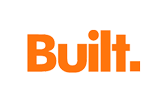Women in Construction: How Diversity Training Can Help You Recruit and Retain Female Employees
 Guest contributor Max Maccarone is a content editor for the higher education portal educations.com and professional development search engine findcourses.com.
Guest contributor Max Maccarone is a content editor for the higher education portal educations.com and professional development search engine findcourses.com.
Conversations on the importance of driving gender diversity across industries are continuing to become more commonplace. Equal gender representation in the workplace is rightly becoming normalized, but the reality for women in the construction industry is rife with barriers for achieving equality.
Providing diversity and inclusion (D&I) training in the construction industry is one way to begin breaking down barriers. The 2019 Learning & Development (L&D) report found that companies that have seen growth over the last year are 72% more likely to offer diversity and inclusion training compared to companies that didn’t see growth. Integrating D&I into your training function is not only a key tool in recruiting and retaining more female employees in construction but has the added benefit of being better for business.
The statistics concerning women in construction demonstrate the industry’s stark need for driving diversity. According to the National Association of Women in Construction:
- Women in the construction industry populate only 1.5% of the entire U.S. workforce
- Within the construction industry, women make up only 9.5% of the entire construction population
- A vast majority of women in construction occupy Management, Sales & Office roles
- Only 1.5% of women have service occupation roles
- Only 1.4% have production, transportation, and material moving roles
Your construction company can use D&I to organically drive and maintain gender diversity from within your organization while increasing your competitive advantage in one fell swoop. Conversations with practicing training professionals indicate that well-strategized D&I training can help your organization impact culture towards women both on-site and at corporate and project offices.
Maintaining diversity requires quality leadership
If you’re a company, project, or site manager, you may not have direct contact with everyone involved in a given project to monitor your D&I strategy as closely as you’d like. Think about investing in other types of training such as developing project leaders in their leadership skills, and rest easy in the knowledge that you have a well-trained leadership team who will not only see the project through to completion but that will maintain a culture of diversity for the duration of a project, and beyond.
Normalize an inclusive culture to make it stick
As a traditionally male-dominated industry, women’s roles in the construction industry are oftentimes relegated to non-manual work. While that perspective is slowly shifting, normalizing the idea of having female employees in the multitudes of available construction roles both on- and off-site is a key aspect of making a cultural shift stick over the long term.
At BCG Digital Ventures (DV), formal training initiatives such as unconscious bias training are complemented by more informal training strategies to remind employees of the importance of diversity. Learning and organizational development specialist Max Avruch explains that, “So many companies hold off on D&I training until they get bigger, but by then, the culture already starts forming.” By taking the steps to make a shift at the cultural level first, diversity will be driven and accepted more organically over time.
In a similar L&D report from findcourses.co.uk, D&I training was amongst the top five training priorities for all companies surveyed. The demand for implementing and maintaining diversity through training is there, and it’s not as intimidating as you may think.
BCG DV offers its employees lunch-and-learn programming and employee resource groups. Resource groups are an especially important strategy for employees with shared identities (and allies) to come together and share their experiences in and out of the workplace. Set the standard for the expected culture on-site or in the office from day one, so female employees are aware of the mechanisms in place to support them in their roles.
Start small and work your way up
According to Texanna Reeves, Executive Director of the Global Diversity and Inclusion Center of Excellence at Merck, “For those organizations that might be at the beginning of their D&I journey, start small. Then, focus on your audience in terms of who you want to have an impact on first and then build up from there. Really look at where you can get started and then just go ahead and chip away at it!”
From ironworkers to plumbers, to managers and inspectors, the opportunities for engaging more women in construction roles are endless. As illustrated by Avruch’s strategy at BCG DV, diversity training initiatives don’t necessarily need to be full-day undertakings that take employees away from on-site labor, or administrators and management away from important tasks. Start small and work your way up to introduce the idea of diversity in a digestible manner — accessible to all types of employees within your organization.
Skanska USA Building Business Unit President and CEO Paul Hewins finds that taking simple steps is the best way to drive diversity from the bottom up. Hewins explains in a Q&A that something as small as engaging with employees who typically don’t speak up is a direct way to illustrate that everyone’s perspectives are valuable. When everyone’s voice is brought to the table, you’ll find issues on sites and with employees smooth themselves out organically.
Bringing it home: Recruit and retain female employees
Once you’ve begun to shift your workplace culture and engage with female employees in more informal ways, what other steps can you take using training to ensure you have a sustainable talent pipeline of women in construction? Making changes to your workplace culture will help to retain more women in construction roles, but what about recruitment?
Training can make impactful changes to how female employees are treated and included on-site and how your organization’s culture is thought of by external talent. Unconscious bias training represents one core strategy for making internal changes from within your organization while promoting your organization’s bourgeoning culture of inclusivity to external stakeholders.
Avruch of BCG DV finds that in D&I training, “It’s the notion of really trying to include everyone and not feeling like there’s the segregation that can easily happen in a work-type community.” The key is to consider D&I and unconscious bias training as helpful tools for driving diversity, not as a mandatory HR initiative. By implementing unconscious bias training, employees in charge of recruitment will gain the skills to recognize how bias plays into their hiring practices, and move past the common and discriminatory stereotypes of women in the construction sector.
Using these strategies to drive diversity, you’ll be setting your organization up for long term success. A study from the Center for Creative Leadership has shown that having more women in the workplace leads to more job satisfaction, organizational dedication, more meaningful work, and decreased burnout. Considering that 48% of employees in the L&D report revealed that they don’t receive any type of D&I training, dedicating the resources to invest in D&I will be an important endeavor to develop your organization sustainably and competitively for the future.

 Max Maccarone •
Max Maccarone • 
















